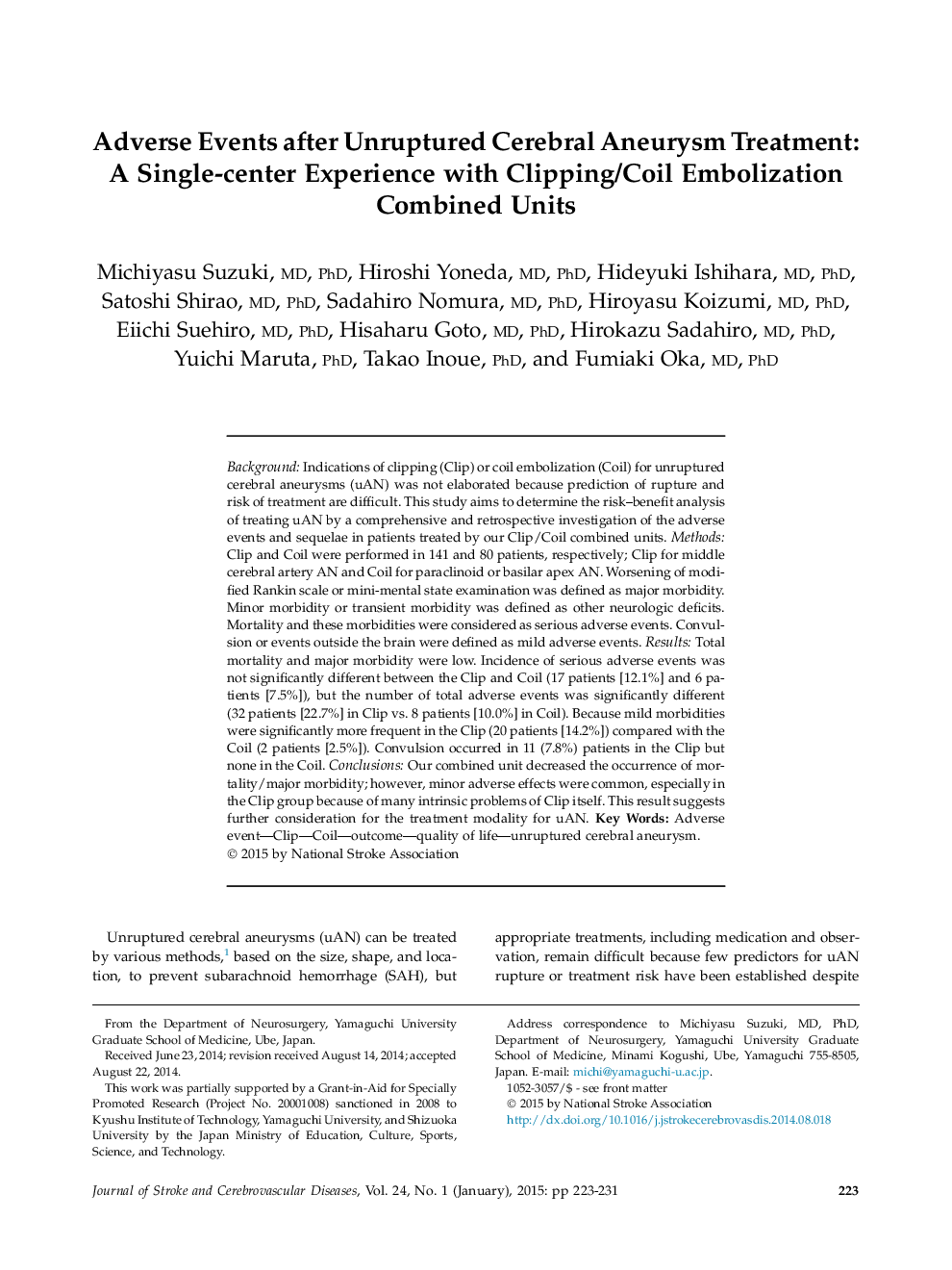| Article ID | Journal | Published Year | Pages | File Type |
|---|---|---|---|---|
| 2710335 | Journal of Stroke and Cerebrovascular Diseases | 2015 | 9 Pages |
BackgroundIndications of clipping (Clip) or coil embolization (Coil) for unruptured cerebral aneurysms (uAN) was not elaborated because prediction of rupture and risk of treatment are difficult. This study aims to determine the risk–benefit analysis of treating uAN by a comprehensive and retrospective investigation of the adverse events and sequelae in patients treated by our Clip/Coil combined units.MethodsClip and Coil were performed in 141 and 80 patients, respectively; Clip for middle cerebral artery AN and Coil for paraclinoid or basilar apex AN. Worsening of modified Rankin scale or mini-mental state examination was defined as major morbidity. Minor morbidity or transient morbidity was defined as other neurologic deficits. Mortality and these morbidities were considered as serious adverse events. Convulsion or events outside the brain were defined as mild adverse events.ResultsTotal mortality and major morbidity were low. Incidence of serious adverse events was not significantly different between the Clip and Coil (17 patients [12.1%] and 6 patients [7.5%]), but the number of total adverse events was significantly different (32 patients [22.7%] in Clip vs. 8 patients [10.0%] in Coil). Because mild morbidities were significantly more frequent in the Clip (20 patients [14.2%]) compared with the Coil (2 patients [2.5%]). Convulsion occurred in 11 (7.8%) patients in the Clip but none in the Coil.ConclusionsOur combined unit decreased the occurrence of mortality/major morbidity; however, minor adverse effects were common, especially in the Clip group because of many intrinsic problems of Clip itself. This result suggests further consideration for the treatment modality for uAN.
